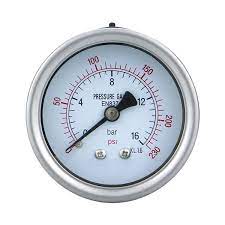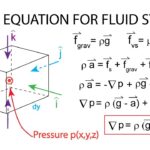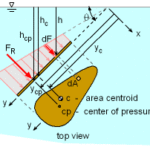Manometers are simple devices that employ liquid columns for measuring pressure difference between two points.
In Figure(L 8.1), some of the commonly used manometers are shown.
In all the cases, a tube is attached to a point where the pressure difference is to be measured and its other end left open to the atmosphere. If the pressure at the point P is higher than the local atmospheric pressure the liquid will rise in the tube. Since the column of the liquid in the tube is at rest, the liquid pressure P must be balanced by the hydrostatic pressure due to the column of liquid and the superimposed atmospheric pressure, Patm .

This simplest form of manometer is called a Piezometer . It may be inadequate if the pressure difference is either very small or large.
U – Tube Manometer
In (Fig : L -8.2), a manometer with two vertical limbs forms a U-shaped measuring tube. A liquid of different density r1 is used as a manometric fluid. We may recall the Pascal’s law which states that the pressure on a horizontal plane in a continuous fluid at rest is the same. Applying this equality of pressure at points B and C on the plane gives

Inclined Manometer
A manometer with an inclined tube arrangement helps to amplify the pressure reading, especially in low pressure range. A typical arrangement of the same is shown in Fig. L-8.3.

At the same pressure difference, Equations (1) and (2) indicate that inclined tube manometer amplifies the length of measurement by , which is the primary advantage of such type of manometer.


